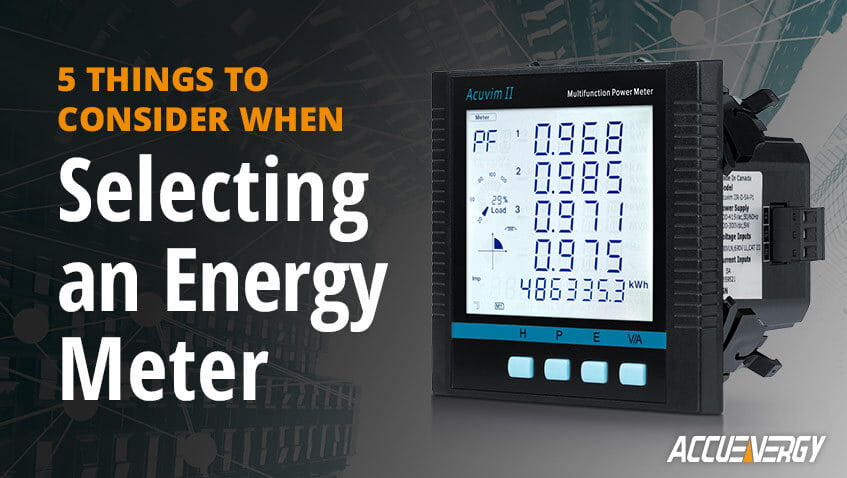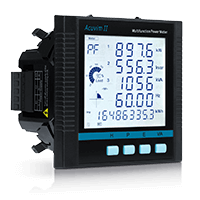5 Things to Consider when Selecting an Energy Meter
Whether your application is tenant submetering or power quality monitoring, there are many critical features to consider when selecting the right energy meter. Availability of industrial automation protocols, specified accuracy class, design or form factor, and other key specifications require thoughtful review before making a final choice to ensure the meter matches your project objectives. As you work through the selection process, here are five important criteria to keep in mind.
1 – Modular Solution
Some energy meters utilize add-on modules to increase base meter functionality by expanding I/O and communication protocols. As project requirements evolve over time, communication options can be added as needed, ensuring that the meter adapts as conditions change. Rather than replacing the existing meter or over-specifying at the beginning of a project, time and money are saved by performing necessary in-field upgrades to previously installed equipment.
2 – Simple Integration
Especially critical in retrofit situations, it is important to select a meter which will integrate seamlessly into an existing building automation system. A software agnostic energy meter, particularly one that combines industry-leading versatility and multiple communication options in a robust, high-performance design, is critical to ensuring simple integration. Energy meters that use open, industrial communication protocols, such as Modbus and BACnet, are specifically suited to building system integration. They can be easily deployed into systems communicating via Modbus RTU, Modbus TCP/IP, BACnet MS/TP, or BACnet IP. In addition, some energy meters utilize other protocols including SNMP, DNP3, DNP3 over IP, IEC 61850, or Ethernet IP along with post functions via FTP and HTTP for compatibility with existing servers or systems.
3 – High Accuracy Measurements
Applications such as submetering, protecting critical equipment, and measurement and control require reliable, high-precision measurements, The ability to monitor over 400 measurement parameters with ANSI C12.20 Class 0.2 revenue grade accuracy is imperative to safeguarding sensitive equipment and ensuring facility operations run at peak efficiency. In-depth analysis on collected data can be crucial to identifying improvement opportunities, further increasing facility performance.
4 – Multiple Form Factors
Some power and energy meters are available in a variety of form factors, making it easy to tailor the instrument to each unique application. Configurations can include panel mount, as a DIN rail mountable transducer base for system integration, with a large LCD, or in a pre-wired enclosure for fast, efficient installation. Superior flexibility ensures the energy meter is well suited for industrial, commercial, residential, or any other project environment.
5 – Feature Rich
It is crucial to select a robust energy meter that combines innovative, industry-leading features in a single, high-performance instrument. Valuable features such as sub-100ms refresh rates, dedicated web server, and configurable Modbus registers provide facilities engineers critical system data for informed decision making. Additional features such as access to data logs, remote metering, tariff segregation, switch status monitoring, and threshold alarms set the energy meter apart from competitive devices and make it the preferred choice for energy professionals.


